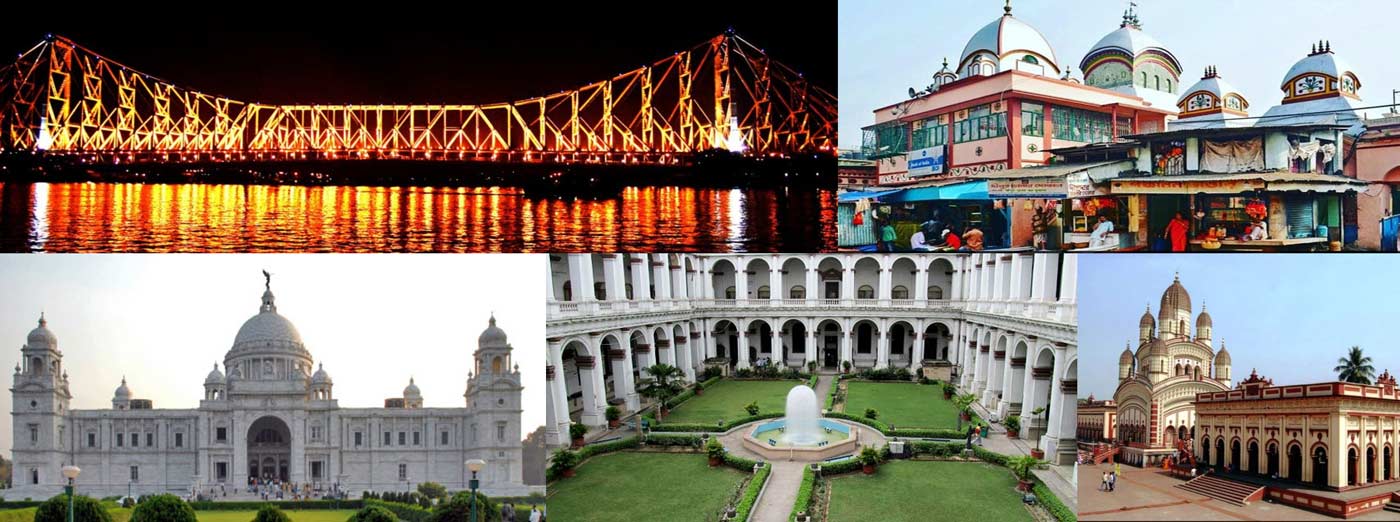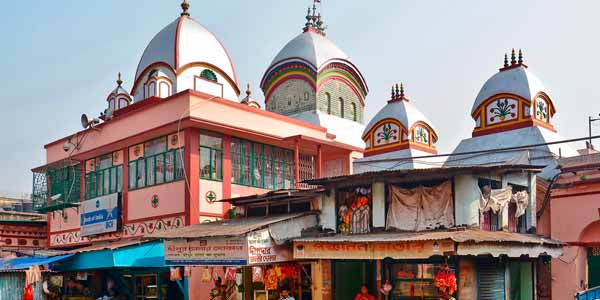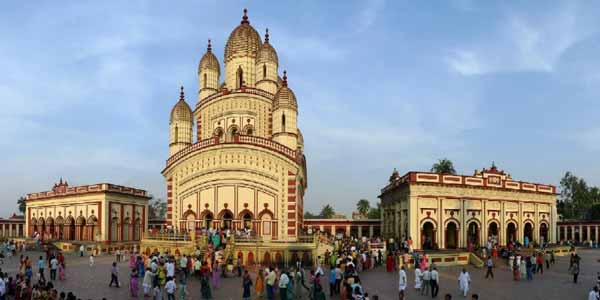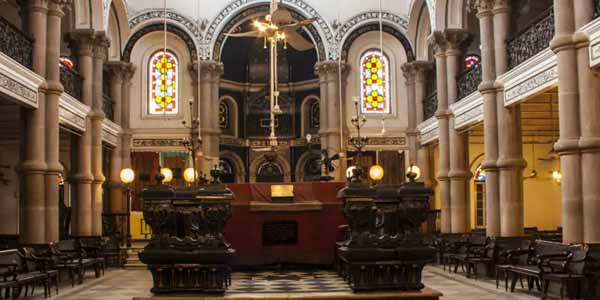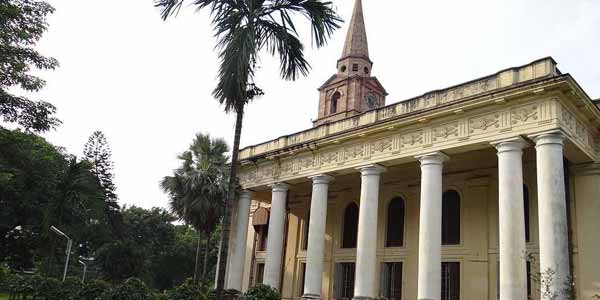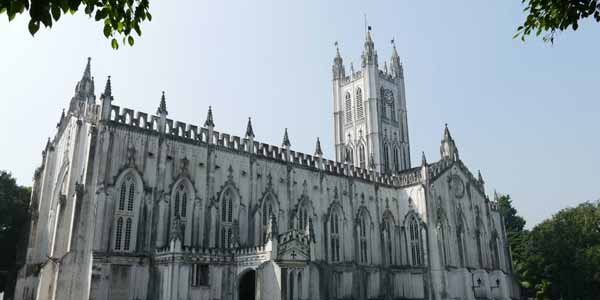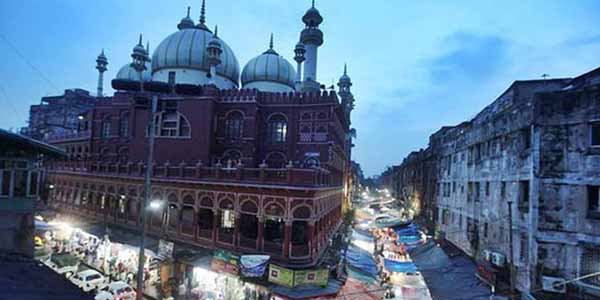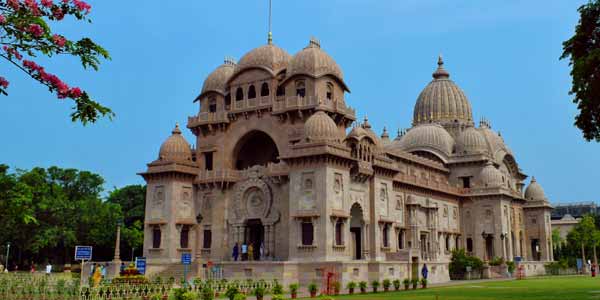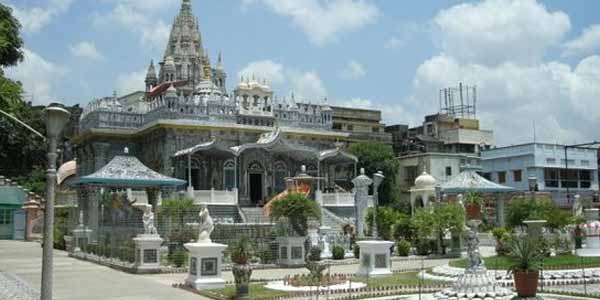
Dakshineswar Kali Temple
Dakshineswar temple is one of the most revered, sacred temples in Kolkata, dedicated to goddess Kali. Dakshineswar Temple is one of the largest temples near Kolkata and it is also an architectural treasure. The temple was built in conventional Nava-ratna style. It boasts a towering height of more than 100 feet. The 12-spired temple with its massive courtyard is flanked by 12 other small temples, devoted to Lord Shiva. It was founded by Rani Rashmoni on the 31st of May 1855. The holy tithi was of Jagannath Deva Snanyatra. This widely famed temple of Dakshineswar is famous among pilgrims all over the world. It was at this very place that the Rama Krishna Paramhamsa, the highly revered religious thinker attained his spiritual vision and advocated the unity of all religions.
Location of Dakshineswar Kali Temple, near Kolkata
Dakshineswar Temple is located at a distance of 20 km north from the central part of Kolkata. It is located alongside the Vivekananda Bridge. The temple admires the eastern bank of River Hooghly.
History of Dakshineswar Kali Temple
In the early phase of 1800s, Dakshineswar was a mere village, which nestled along the eastern bank of the Ganges River. Dense forest surrounded the area. It is said that Rani Rashmoni of Janbazar, while on her pilgrimage to Varanasi, had a dream, where she was instructed to built a Kali temple. Rani Rashmoni was quite a dynamic woman, who was highly respected and adorned by her people. She was intensely moved by the dream and to materialize it, she instructed her people to search for suitable plots to erect the Kali Temple. After a long hunt for land, eventually a 20-acre plot was selected in the village of Dakshineswar. A part of the land belonged to the European Christian, whereas the other part was a Muslim burial ground. In the year 1847AD, under the patronage of Rani Rashmoni, the construction of Dakshineswar Temple was initiated on this very site, signifying the unity of different faiths.
It was decided that the idols of the Gods and the Goddess would be installed on the auspicious day of the ‘snana-yatra’. The temple of Dakshineswar is dedicated to Sri Sri Jagadiswari Kalimata Thakurani. Rani Rashmoni was very benevolent and she wished that pilgrims of all religions and castes would be allowed to offer prayer at the temple. Rani survived only for five years and nine months after the temple was inaugurated. She fell seriously ill in 1861. Realizing that her days are numbered, she handed over a property that she bought at Dinajpur as a legacy for the maintenance of the temple to the temple trust. She passed on 18th February, 1861.
The construction of Dakshineswar temple was initiated in 1847 and it was completed in 1855. The estimated cost of the construction was Rs. 9 Lakhs, of which Rs. 2 Lakhs was spent on the very day of inauguration. The temple along with its abiding areas spans 25 acres of land, which makes Dakshineswar temple one of the biggest temples in Kolkata. The main temple premise is around 46 sq ft. Dakshineswar temple was built in the traditional ‘Nava-ratna’ or nine spires style of Bengal architecture. The roof of the temple spires have been grooved artistically with a striking resemblance with the Pirhas. The temple sports a colossal, elongated structure, resting on a high platform with a flight of stairs. It is a three-story, south-faced temple. The nine spires of the temple are distributed in upper two stories. A narrow covered verandah has been erected, which serves as an audience-chamber and it is attached to the sanctum, which houses the goddess Dakshina Kali. A huge spacious Natmandir (Dancing hall) has been erected in front of the temple.
The Garbha Griha houses the deity of goddess Kali, famously known as Bhavataraini. The idol stands on the chest of Lord Shiva, who rests in a lying posture. The two idols stand beautifully on a thousand-petal lotus, made of silver. This colossal temple of Kali is renowned as one of the rare temples of Indian origin.
This Kali Temple in Dakshineswar is very much associated with Sri Ramakrishna Pramhans, as he was one of the earliest priests of the temple. His room, which nestles at the temple premise, can be accessed by all devotees, who visit the temple.
Tuesdays and Saturdays are believed as auspicious day for Kali worship. On both these days, there is a huge congregation of devotees at the Dakshineswar temple. The Sandhya Aarti is the prime attraction of devotees, which is truly amazing.
Religious Places in Calcutta
Religious Places in Calcutta, India’s second-largest city, located on India’s Eastern Coast, boasts of being an artistic, cultural and intellectual capital of the country. Its streets and bylanes are vivid, hectic, chaotic, and yet, brimming with life and creativity, and soaked in layers of heritage and culture. The city served as the erstwhile capital of the British empire before the government was shifted to Delhi, and thus features a unique touch of its royal past lingering in every nook and cranny. The metropolitan city is famous for its vibrant cultural and historical places and ethnicity and is a divine hub for innumerable temples, many of which are extensive pilgrimage sites.
 +91 9799050299
+91 9799050299 